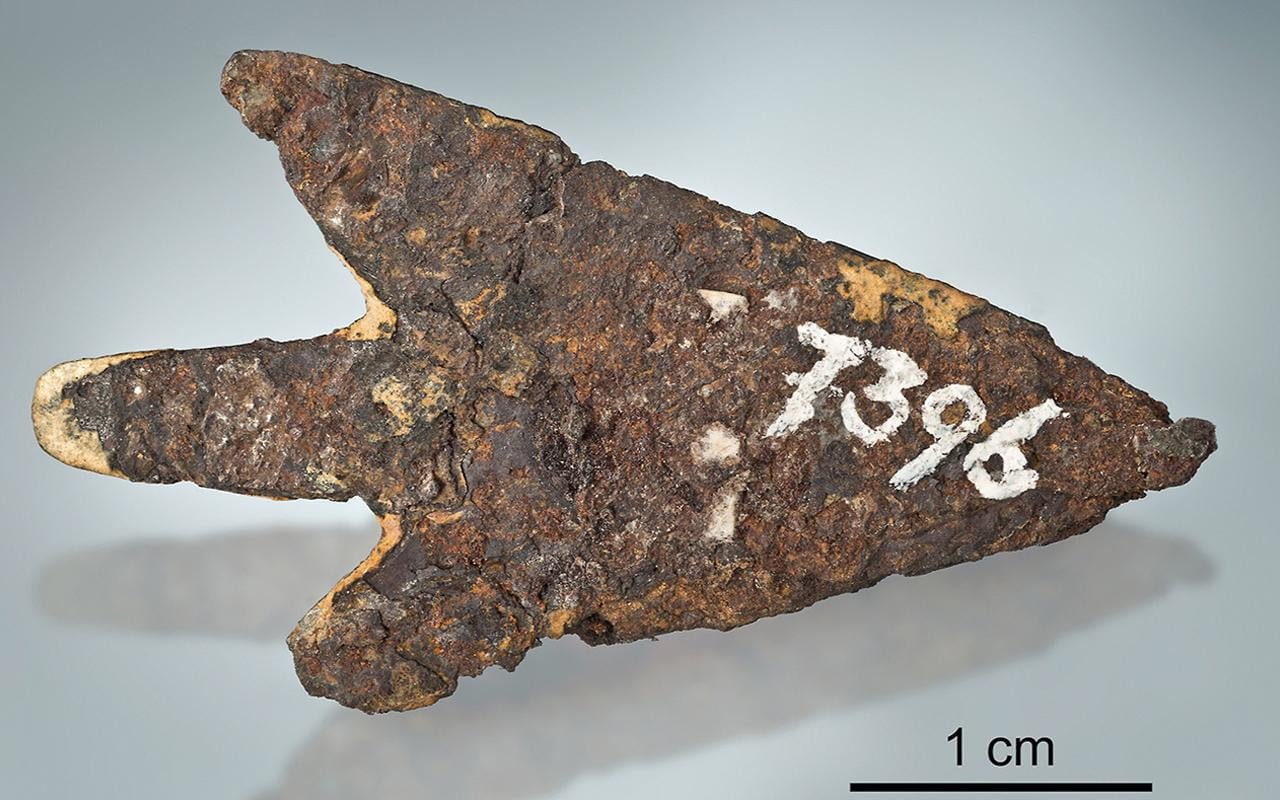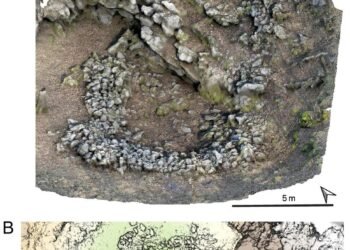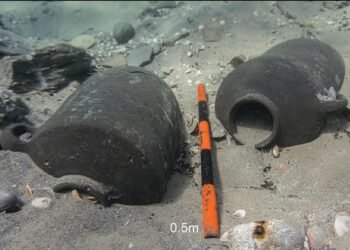A Bronze Age arrowhead, originally excavated from a stilt house settlement at Mörigen in Switzerland’s canton of Bern during the 19th century, has unveiled an astonishing secret: it was crafted from meteoritic iron, a material not naturally found on Earth.
The artifact, measuring 39 millimeters in length and weighing 2.9 grams, had been safeguarded in the Bern Historical Museum, where it remained an inconspicuous part of their collection until a recent interdisciplinary study conducted by the Natural History Museum Bern brought its extraterrestrial origin to light.

The settlement at Mörigen, dating back to 900 to 800 BCE, was inhabited by the Urnfield culture, a society of the late Bronze Age in Central Europe. The region’s archaeological significance was recognized in 1843 when lowering water levels in Lake Biel revealed the site, prompting amateur excavations and the removal of artifacts that were later placed in private collections.
Concerned about the preservation of this historical treasure, the Bernese government intervened in 1873, commissioning a comprehensive survey led by archaeologists Edward Jenner and Edmund Fellberg.
Published in the Journal of Archaeological Science, the recent study, helmed by geologist Prof. Dr. Beda Hofmann and physicist Prof. Dr. Marc Schumann of the University of Freiburg, unveiled the remarkable origin of the arrowhead through a combination of cutting-edge techniques including gamma spectrometry, X-ray tomography, and muon-induced X-ray emission (MIXE) analysis.
“It’s been well documented that trade was well established over large distances during the Bronze Age,” Hofmann explained, underlining the significance of the discovery. “These early people likely knew that when the impact happened there in 1500 B.C., the material was precious and had value to it.”
The arrowhead’s composition included not only aluminum-26 isotopes, a telltale sign of extraterrestrial origin due to its production in outer space, but also an iron and nickel alloy consistent with meteorites.
This irrefutable evidence hinted at a sophisticated network of trade during the Bronze Age, potentially connecting Central Europe to distant regions such as Estonia, where the Kaalijarv meteorite fell around 1500 BCE.
Schumann emphasized the groundbreaking nature of their interdisciplinary approach, stating, “The unusual aspect of this project is that we worked in a very interdisciplinary way and combined methods from such disparate sectors as archaeology, meteorite research, and particle physics.”
The researchers identified the Kaalijarv meteorite from Estonia as the most probable origin. The impact of this meteorite created several craters, resulting in numerous smaller fragments that could have been traded across considerable distances during the Bronze Age.
The use of meteoritic iron artifacts during the periods preceding the Iron Age in Eurasia and northern Africa is known through archaeological discoveries in regions encompassing Turkey, Iran, Greece, Syria, Egypt, Iraq, Lebanon, Russia, and China.
The arrowhead will be on display at the Bern Historical Museum from February 1, 2024, to April 25, 2025.
More information: Hofmann, B.A. et al. (2023). An arrowhead made of meteoritic iron from the late Bronze Age settlement of Mörigen, Switzerland and its possible source, Journal of Archaeological Science. DOI: https://doi.org/10.1016/j.jas.2023.105827





















